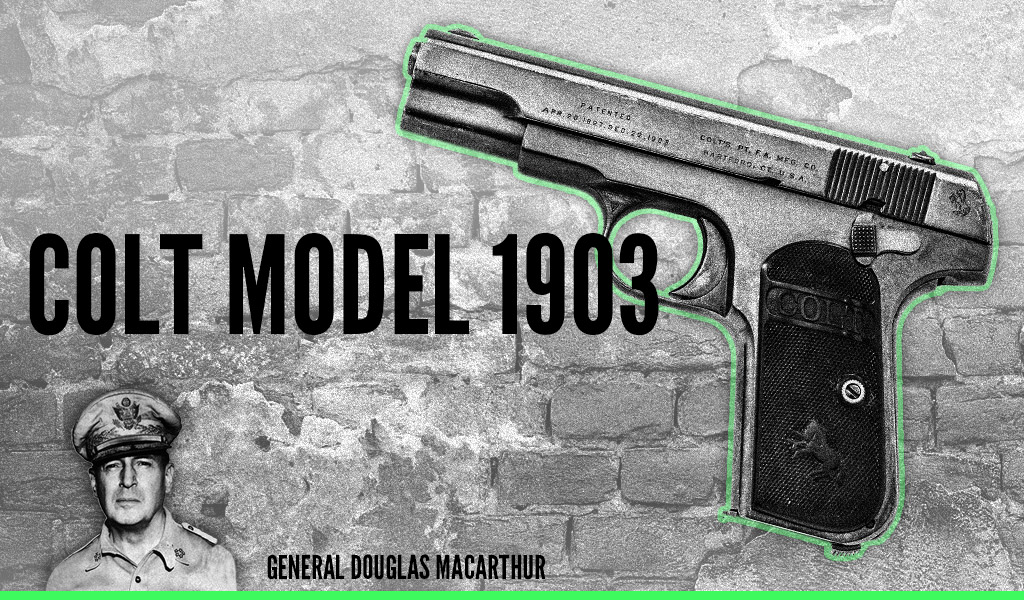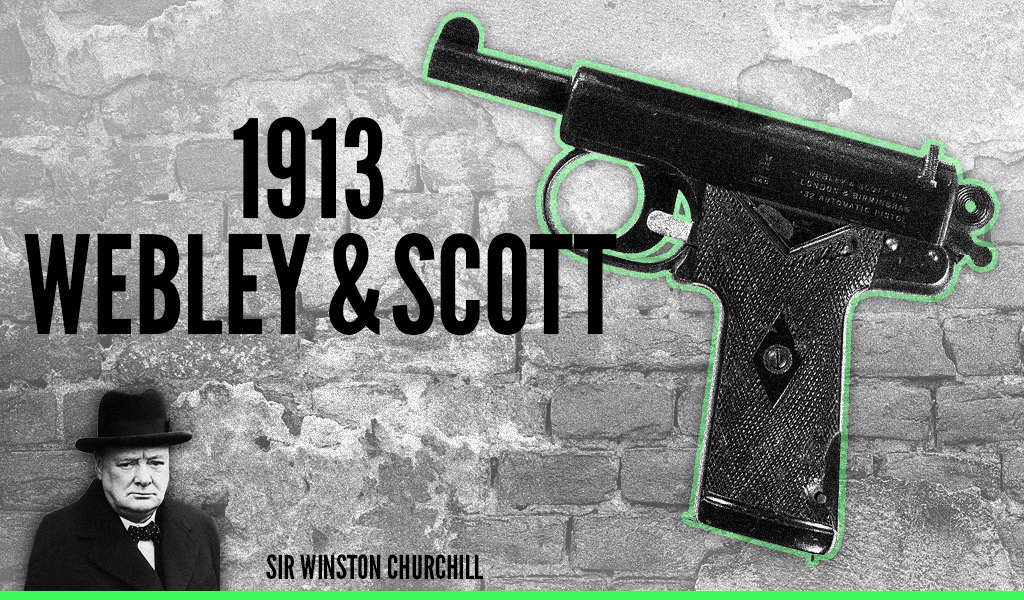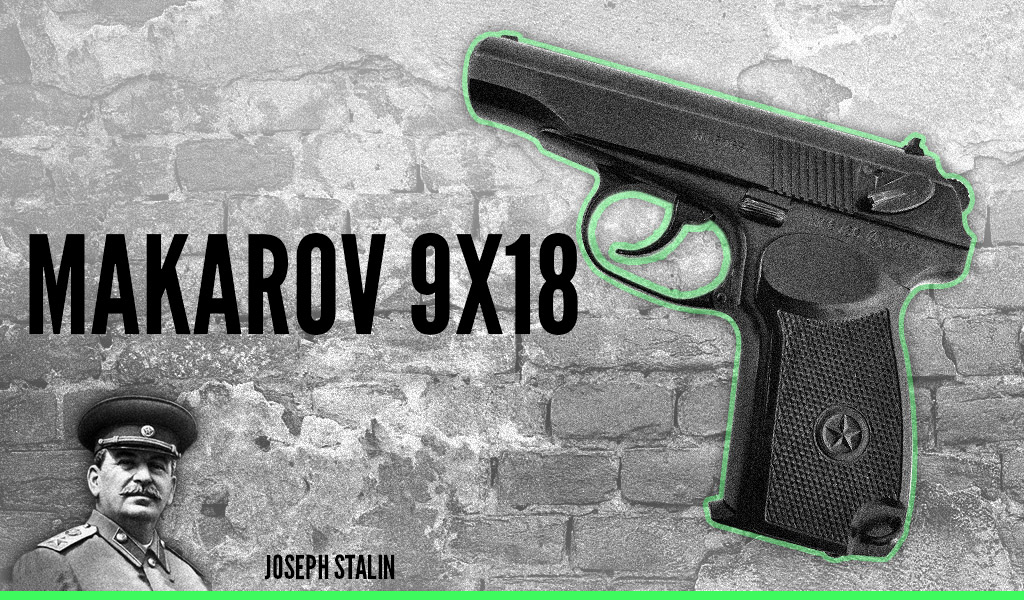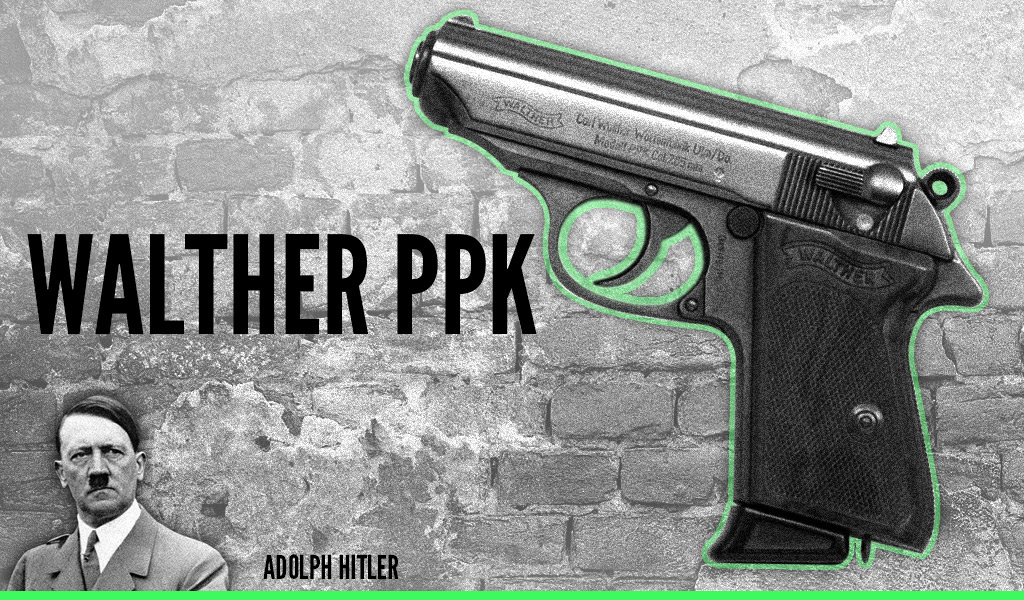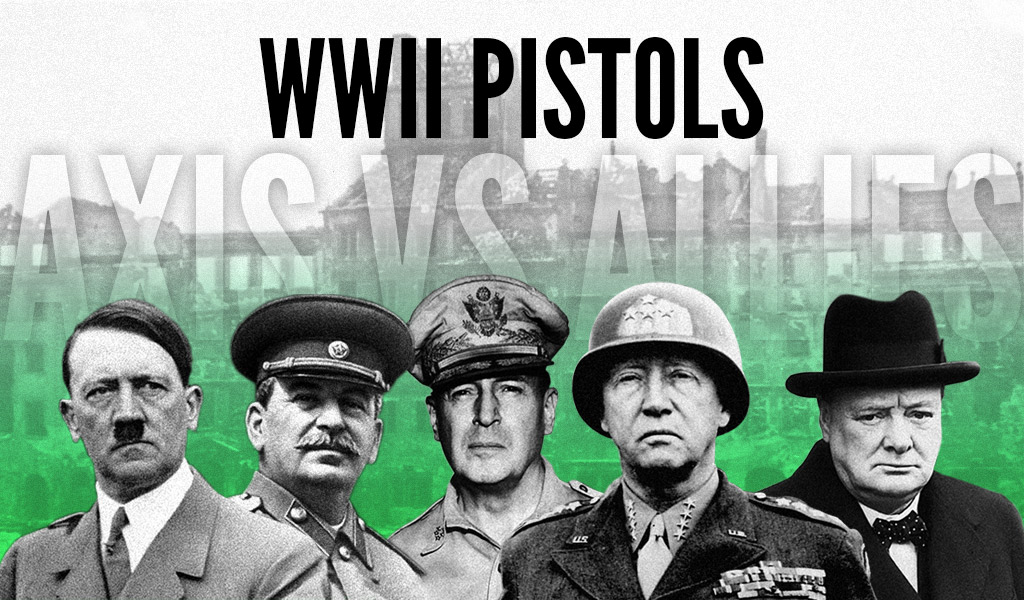
Some of the world’s most memorable figures met at the center stage of the greatest tragedy in history: The Second World War. Upwards of fifty million people—military and civilians—would lose their lives in a mere six years of fighting. What would emerge from the rubble were heroes and villains who would forever have a place in the history books and whose names still bring on clear images 75 years later.
Here are five of those historical figures and the handguns of WWII they carried. In the case of the first pistol on the list, the gun added to his legendary status:
Handguns of World War II Icons: Patton
Colorful. Brash. Mercurial. Arrogant. These are just a few of the adjectives that were attached to arguably the greatest fighting general of World War II. You could also add the word “paradoxical” since Patton could be as foul-mouthed as any of his soldiers but also had a strong faith and believed in the power of prayer. He was often a polarizing figure. His troops loved him, some Allied leaders hated him, all the while he earned respect and fear from the enemy.
While Patton owned several pistols, the two revolvers usually associated with him are the .45 Long Colt Single Action, 1873 Army Model, and the .357 Magnum Smith & Wesson. According to those who knew him well, Patton considered the .45 Colt to be his choice for an everyday carrying handgun. The .357 Magnum, on the other hand, was his killing weapon, to be used on the battlefield if the need ever arose.
It should be pointed out that Patton’s handguns were ivory-handled, not pearl-handled, as some have described them!
Handguns of World War II Icons: MacArthur
Most, if not all, of the adjectives prescribed for General Patton, are a suitable fit for Douglas MacArthur. In a recent article, Time magazine called his ego “gargantuan.” And the normally diplomatic Dwight Eisenhower once remarked, “MacArthur could never see a sun, or even a moon for that matter, in the heavens, as long as he was the sun.”
Despite some unfortunate decisions in the Pacific theater in World War II, and at the Chosin Reservoir during the Korean conflict, most Americans considered General MacArthur a hero. In fact, his popularity was so high that he was considered a possible presidential contender in 1952, after then-President Harry Truman relieved him of his duties.
General MacArthur owned a Colt Model 1903 self-loading semi-automatic pistol, a .32 ACP caliber handgun that he carried during the siege of the Philippines in 1942. MacArthur received the Browning-designed pistol during his tenure as superintendent of the U.S. Military Academy at West Point, New York.
Handguns of World War II Icons: Churchill
Most people remember Winston Churchill as the prime minister of England during the dark days of World War II. Churchill rallied the English citizens as his country stood alone against German aggression.
But Churchill had already played an important role years earlier during World War I. As First Lord of the Admiralty, he spent his pre-war years focusing on naval preparation. He frequently visited naval stations, improving the morale of naval forces, and studying Germany’s naval development.
In January 1916, mid-way through the war, the military promoted Churchill to lieutenant-colonel. They installed him atop the Royal Scots Fusiliers, an infantry regiment. They sent the future prime minister to the front near Ploegsteert, Belgium, close to some of the fiercest fighting. Churchill spent three and a half months at the front, where his battalion received relentless shelling.
During the Second World War, one of the handguns that Churchill carried was a 7.65mm 1913 Webley & Scott self-loading pistol. Churchill loved guns and was an expert marksman. There are several historical photographs of him firing various weapons.
While there is no solid evidence that Sir Winston ever fired the pistol in anger, but there were over twenty failed attempts to assassinate him during the war. There is little doubt that his Webley & Scott was always at the ready.
Handguns of World War II Icons: Stalin
Along with President Franklin Roosevelt and Prime Minister Winston Churchill, Joseph Stalin of the Soviet Union completed the triumvirate that defeated Nazi Germany in 1945. The United States and Britain were symbols of democracy, leaders of the free world. Stalin, on the other hand, ruled as an iron-fisted communist dictator until his death in 1953.
During the war, Stalin played the role of the staunch ally but always with an eye toward expanding the Soviet empire throughout Eastern Europe. After the war, he did just that, establishing communist governments throughout the eastern countries. His brutal dictatorship—which included executions, labor camps, purges, and persecution—led to the deaths of millions of his own citizens.
In 1949, Joseph Stalin received a Makarov 9x18mm semi-auto pistol as a birthday gift. Designed by Nikolay Fyodorovich Makarov, the government selected the pistol that year for further development and mass production. By 1951, it had become the Soviet Union’s standard military and police sidearm. The gift came from gunsmiths in Tula, a Russian city south of Moscow. The words “To Joseph Vissarionovich Stalin, for 70th Birthday, from Tula Gunmakers” were engraved on the barrel.
Joseph Stalin was responsible for the deaths of an estimated 20 million people. There is no evidence, however, that he personally killed even one of them using the Makarov.
Handguns of World War II Icons: Hitler
Is there anything left for us to say about Adolph Hitler? Even though he died an ignominious death by his own hand in 1945, he remains one of the top subjects of historical documentaries, books, and even films.
It’s difficult to separate hyperbole from facts with Hitler’s early war history. Most historians acknowledge that he was a veteran of World War I. They also agree that Hitler received the Iron Cross for distinguished service. As for his heroism and the constant danger that he claimed to endure, there is much debate and doubt.
After some underhanded maneuverings, the country appointed Hitler chancellor of Germany in January 1933. But by August 1934, after the death of then-president Paul von Hindenburg, the German people voted to give Hitler complete authority. The combined the offices of chancellor and president to create the post of “Führer und Reichskanzler” (“Leader and Chancellor”).
As they say, the rest is history, and by 1939, Hitler’s armies invaded Poland, starting World War II. The bloodshed continued as scores of innocent civilians would die from aerial attacks, and, of course, the numerous death camps spread predominately across occupied Poland.
Hitler’s Death Pistols?
It’s not surprising that Hitler was a fan of the Walther PP (police pistol). German arms manufacturer Carl Walther Sportwaffen developed and produced the gun. The pistols are blowback-operated and semi-automatic. The Walther PPK is a smaller version of the PP. It features a shorter grip, barrel, and frame, along with a reduced magazine capacity.
By April 30, 1945, the the Axis lost the war, and Soviet troops stood ready to enter Berlin. Hitler and his new wife, Eva Braun, committed suicide in his underground bunker. They both took cyanide, while Hitler added a shot to his head using the Walther PPK 7.65. No one knows what happened to the actual handgun. Hitler reportedly owned several PPKs. So, even though it’s unknown, it’s a good bet that he used the popular model for his final act of killing.
Two World Wars: What Did We Learn?
Five world leaders from a time not so very long ago carried handguns. The “good guys”—Patton, MacArthur, and Churchill—carried their pistols to defend against aggression. To defend those who couldn’t defend themselves, from those who would take away the right to freedom or for self-protection from those who would harm.
Stalin and Hitler, on the other hand, managed to destroy the lives of tens of millions. They did so without removing their weapons from their holsters in battle. Taking away their handguns, the way they disarmed their captive citizens, would have done nothing to change the course of history.
Today, others bent on destroying America’s way of life replaced these two maniacs. On a smaller scale, they roam the streets looking for victims who can’t defend themselves. Some wise person once said that those who don’t learn from history are doomed to repeat it. Let’s hope this lesson has not been forgotten!



